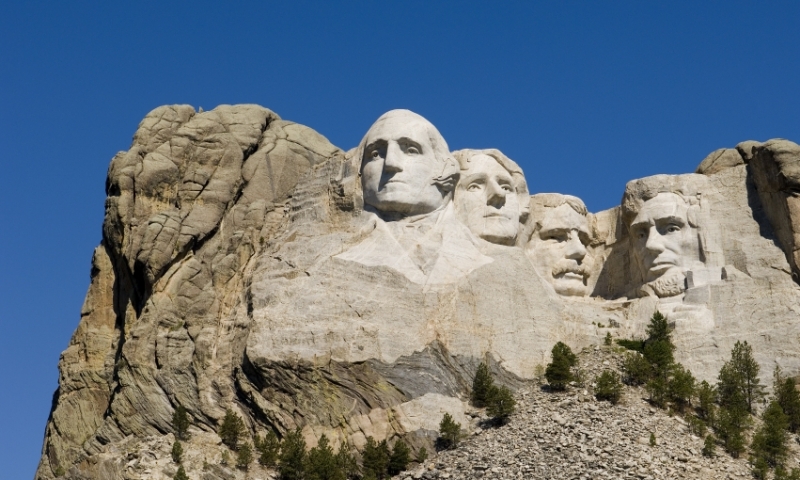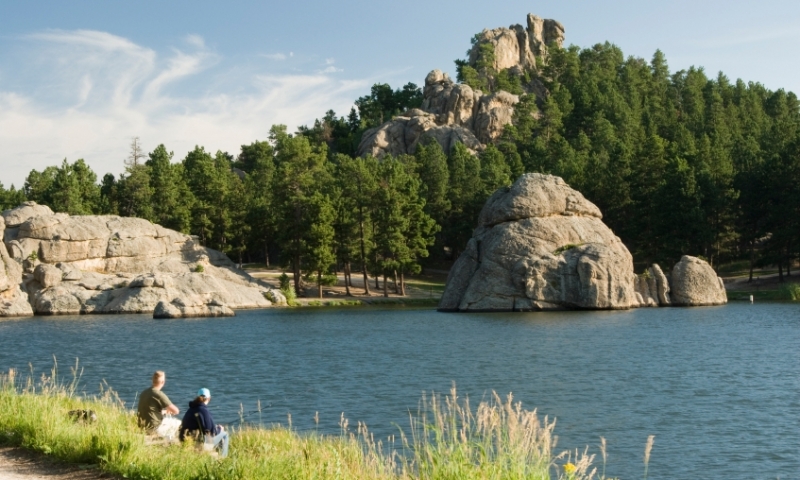- The mountains and forests of the Black Hills include six national parks and 101 miles of national scenic byways.
- Most well-known of all the attractions in the Black Hills is Mount Rushmore.
- It is approximately 500 miles from the Black Hills to Big Sky and will take nearly 8 hours.
Overview
The Black Hills are actually mountains--and not hills--made of some of the oldest rocks in North America. Although the mountains are covered with evergreen trees, they appear to be black when viewed from a distance and against the openness of the Great Plains.
When first viewed by settlers headed west, their “black appearance” garnered the name “Black Hills”.
The mountains and forests of the Black Hills include six national parks and 101 miles of national scenic byways. There are waterfalls, wildlife, recreational trails, fishing and reminders of the Old West. The area also includes 70 attractions for individuals of all ages.
Regional Information
The Black Hills functions as a very spread-out urban area with a year round population of 250,000. Important Black Hills cities and towns include:
- Belle Fourche, a ranching town
- Spearfish, home of Black Hills State University
- Deadwood, a historic and well-preserved gambling Mecca and the current theme town of a popular TV show
- Lead, home of the now-closed Homestake Gold Mine
- Keystone, outside Mount Rushmore
- Hill City, a timber and tourism town in the center of the Hills
- Custer, a mining and tourism town and headquarters for Black Hills National Forest
- Hot Springs, an old resort town in the southern Hills
- Sturgis, originally a military town and now the home of the Sturgis Motorcycle Rally Newcastle, center of the Black Hills petroleum production and refining.
Hours/Seasons
Due to the severe winter weather often experienced by areas of the Black Hills, some activities and attractions close during the colder months. Other areas remain open.
It is advisable to check ahead to discern if the particular attraction or activity will be available when you plan to visit. Several of the attractions in the Black Hills are only open seasonally.
Fees/Costs
Outdoor activities that include hiking, biking, fishing (other than a fishing license), backpacking, horse riding, etc. do not require a fee – unless you are employing the services of an outfitter or guide or intend to do an activity that requires a special use permit.
Other attractions/activities such as museums, historic sites, and various other forms of entertainment may require a fee.
Contact
Black Hills Visitor Information Center
1851 Discovery Circle
Rapid City, SD 57701-7900
(605) 355-3700
Highlights
Mount Rushmore
Most well-known of all the attractions in the Black Hills is Mount Rushmore. Since its completion in 1941, it has joined the Statue of Liberty and the Stars & Stripes as one of America's most inspiring symbols of democracy.
Badlands National Park
The Lakota gave this its name, "mako sica," meaning "land bad." Located in southwestern South Dakota, Badlands National Park consists of 244,000 acres of sharply eroded buttes, pinnacles and spires. It is desolate area almost void of civilization.
Crazy Horse Memorial
The 88-foot-high face of Crazy Horse was dedicated on June 3, 1998, 50 years to the day after the first blast. Work now focuses on the 219-foot-high horse’s head. Blocking out the 22-story high figure has surpassed the halfway mark.
Devils Tower National Monument
A unique and striking geologic wonder steeped in Indian legend is a modern day national park. Devils Tower sits across the state line in northeast Wyoming. The tower is a solitary, stump-shaped granite formation that looms 1,267 feet above the tree-lined Belle Fourche River Valley.
Mount Rushmore
Most well-known of all the attractions in the Black Hills is Mount Rushmore. Since its completion in 1941, it has joined the Statue of Liberty and the Stars & Stripes as one of America's most inspiring symbols of democracy.
Getting Here
One of the major gateway cities to the Black Hills is Rapid City SD. To travel from Rapid City to Big Sky, the most scenic route, although, not the shortest, would be to take I-90 north out of Rapid City and follow it all the way to Bozeman. At Bozeman, you would head south to Big Sky.
This route takes you through the scenic areas of northeast Wyoming and through the communities of Gillette, Buffalo, and Sheridan, WY. In Montana you will pass through Billings, Livingston, Bozeman and finally reach Big Sky, approximately 500 miles to the southwest.







